Biology
Body form and locomotion
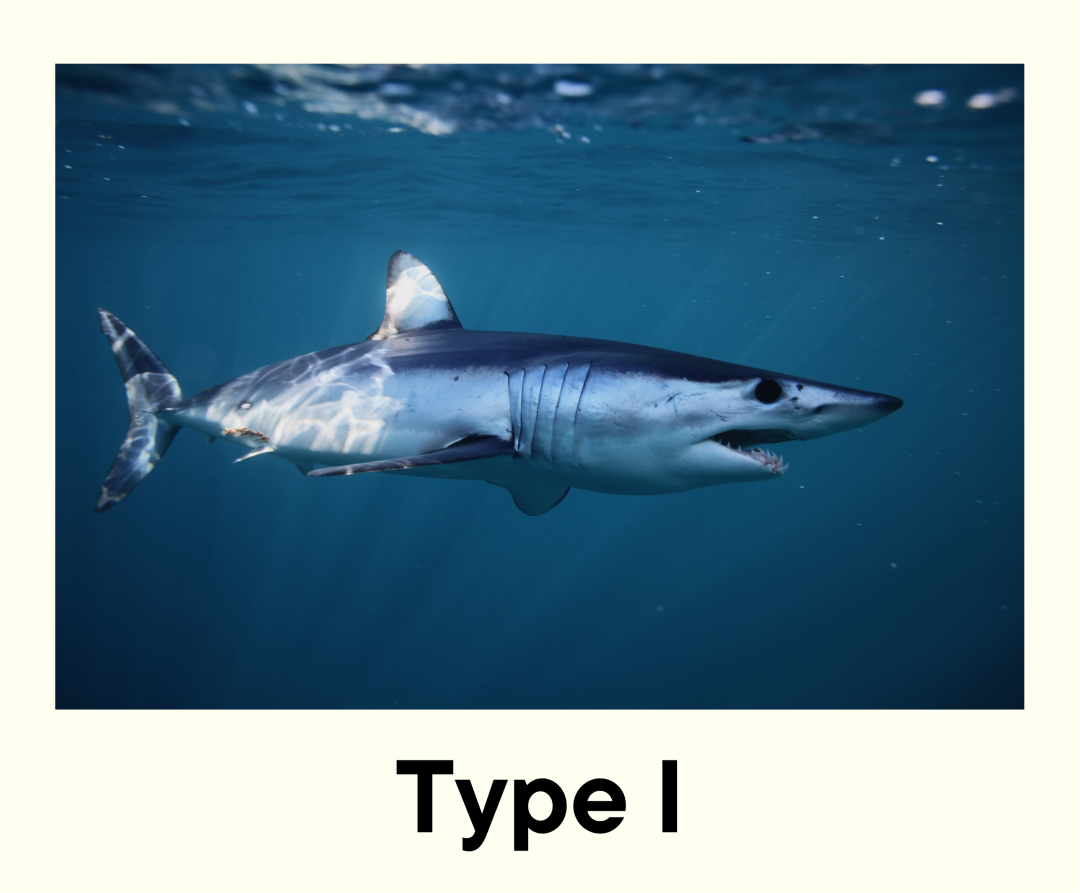
The sharks of this category typically exhibit conical head shapes, large pectoral fins, slender caudal peduncles with lateral keels, and high aspect ratio tails. High aspect ratio tails are characterized by their long and narrow fin shape, providing external symmetry. This type of body form is usually associated with pelagic, fast- swimming species like Carcharodon, Isurus, and Lamna. They possess relatively smaller pelvic, second dorsal, and anal fins, which aid in streamlining and reducing drag, a common feature among high-speed cruisers.
These sharks exhibit more streamlined characteristics with flattened ventral heads and bodies, reduced body depth, and prominent pectoral fins. They lack keels and are considered versatile swimmers, including species like Alopias, Carcharias, Carcharhinus, Galeocerdo, Negaprion, Prionace, Sphyrna, Mustelus, and Triakis. Although Alopias shares similarities with this group, it stands apart due to its elongated pectoral and caudal fins. Hammerhead sharks also belong to this category, distinguished by their unique cephalofoils. Within this group, there is a wide range of swimming speeds, and these sharks remain agile throughout their swimming range, thanks in part to their relatively large pelvic, second dorsal, and anal fins.
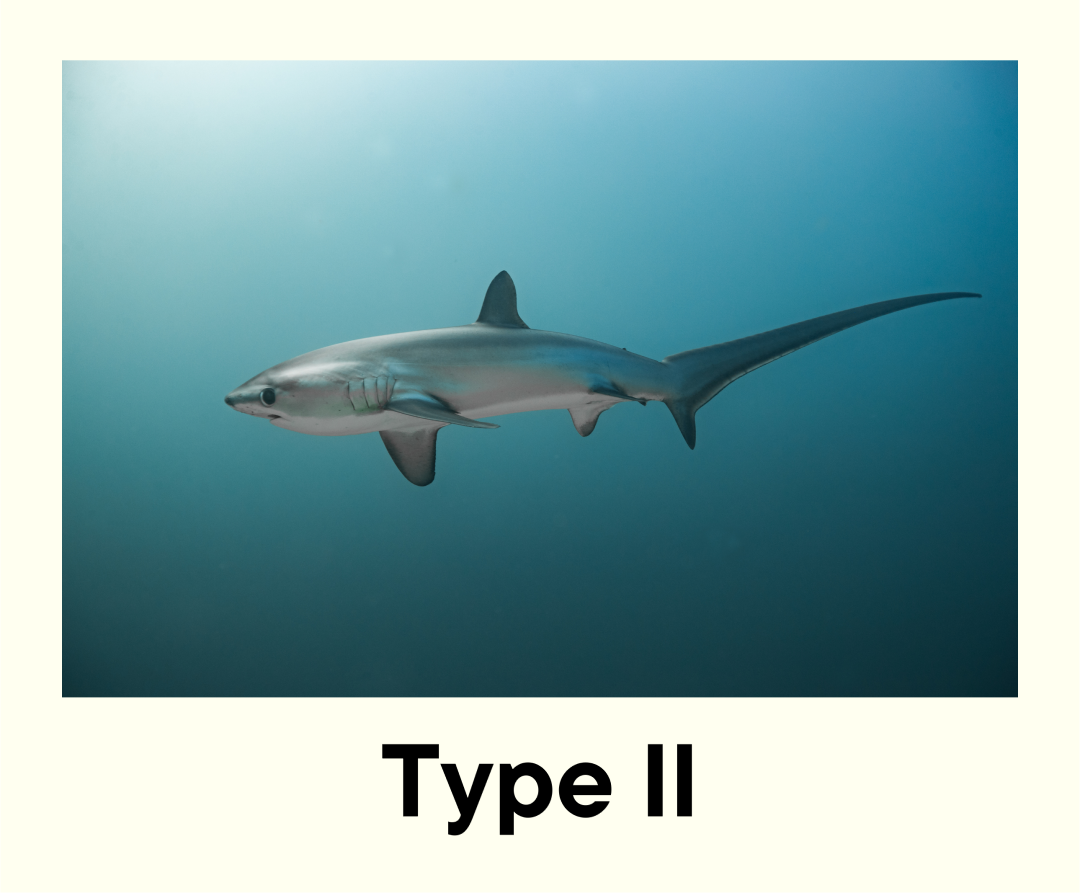
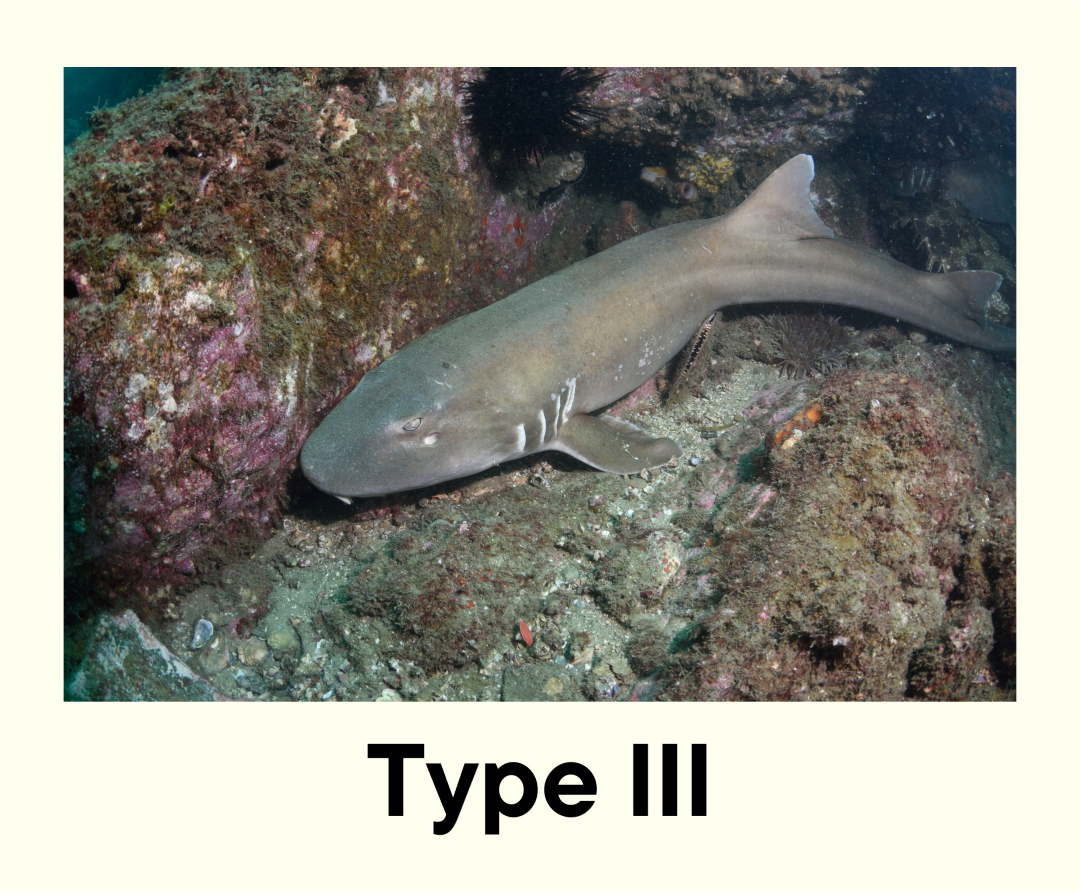
Sharks belonging to this category are characterized by their relatively large heads, blunt snouts, forward-positioned pelvic fins, posteriorly located first dorsal fins, low-angle tails with small to virtually absent lower tail lobes, and prominent subterminal lobes. This group comprises slow-swimming sharks that are typically found in epibenthic, benthic, and demersal environments. Examples of these sharks include Scyliorhinus, Ginglymostoma, Chiloscyllium, Galeus, Apristurus, Psudeotriakis, and Hexanchiformes.
This particular body type exhibits a diverse array of characteristics and encompasses a wide spectrum of body shapes. Sharks of this type are notable for the absence of anal fins and the presence of prominent epicaudal lobes. This category exclusively comprises squalean or dogfish sharks, with most of these species primarily inhabiting deep-sea environments. They are characterized by pectoral fins that are positioned slightly higher on their bodies. Representatives of this category include Squalus, Isistius, Centroscymus, Centroscyllium, Dalatius, Echinorhinus, Etmopterus, and Somniosus.
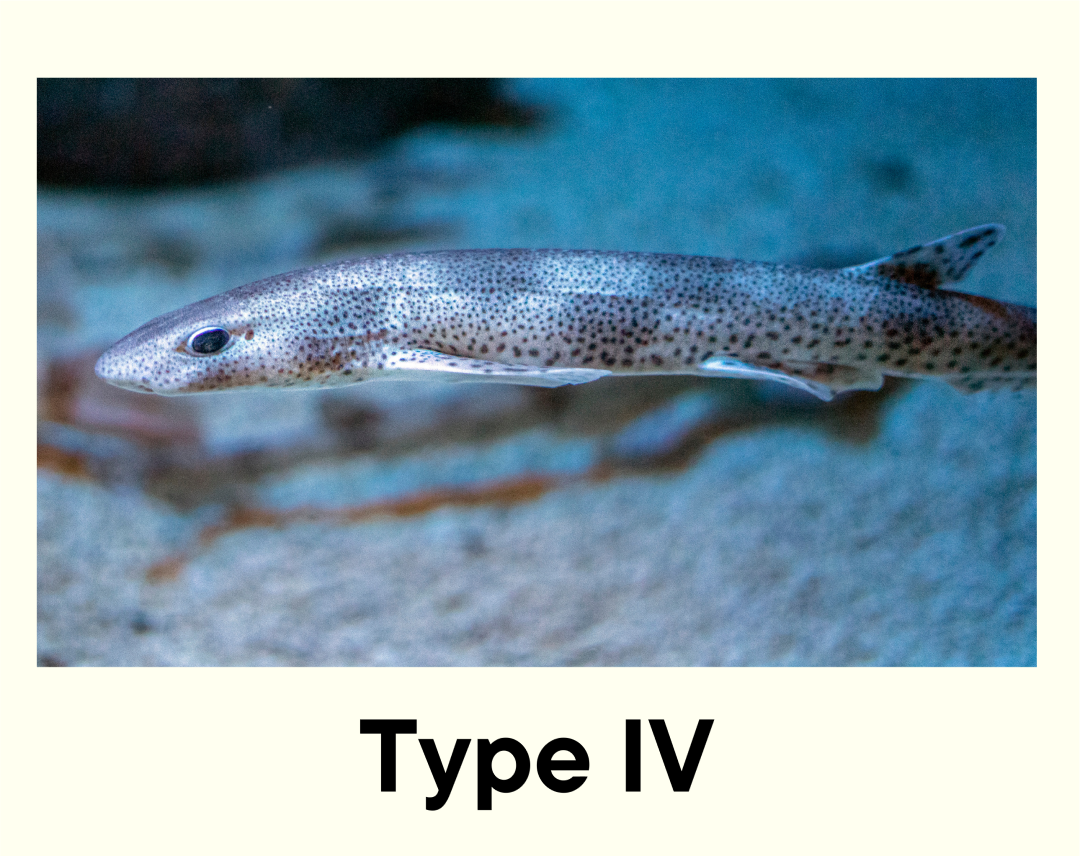
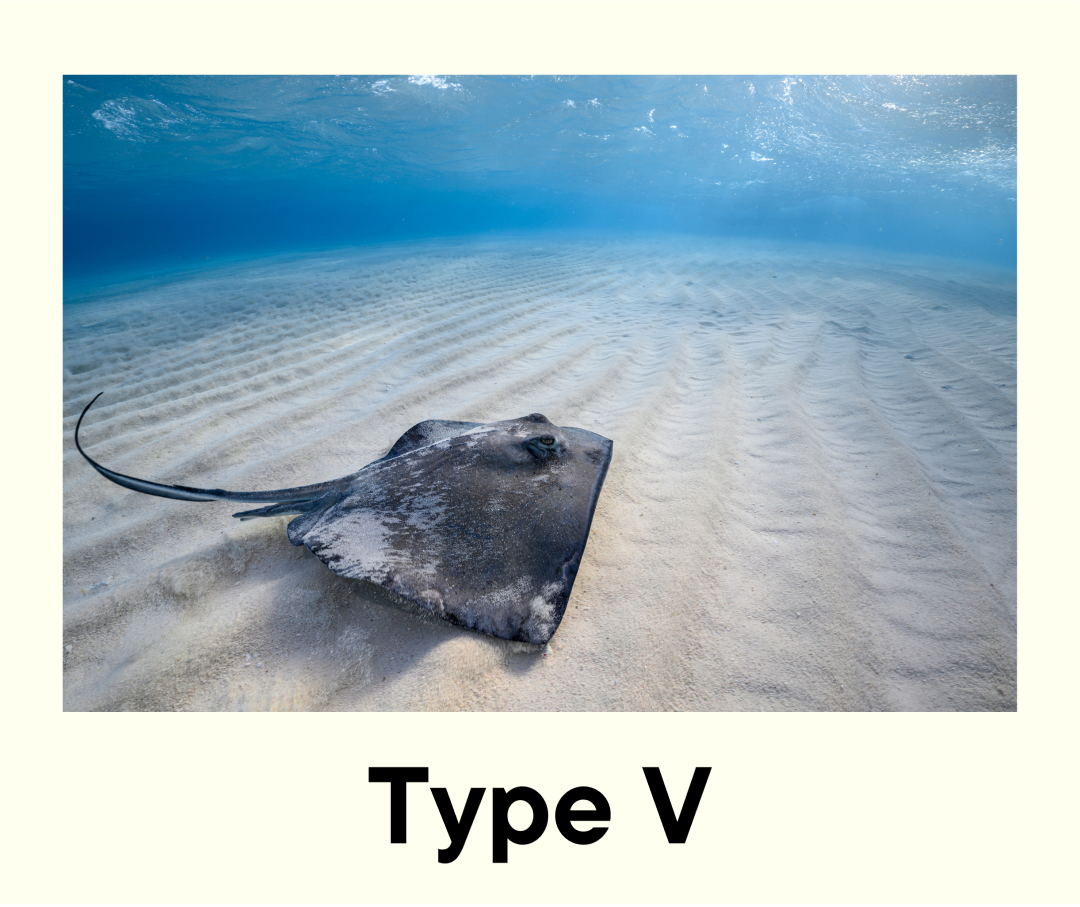
This body type can be described based on dorsoventral flattening of the body, enlarged pectoral fins, and a reduction in the caudal half of the body. This type would include batoids, including Pristiforms, Pristiophoriforms, and angelsharks. These cartilaginous fish are primarily bottom-dwellers, although they also include pelagic Myliobatiform rays. Rajiforms and Myliobatiforms locomote by undulating the pectoral fins, whereas Torpediniforms undulate the tail and Rhinobatiforms, undulate both the pectoral fins and tail.
Holocephalans or chimaeras represent this body type. They are laterally compressed, undulate the pectoral fins instead of the axial body, and swim steadily horizontally, which is a trait shared by teleosts. Chimaeras exhibit a range of tail morphologies, which can vary from a long and tapering (leptocercal) shape to a distinct heterocercal configuration.
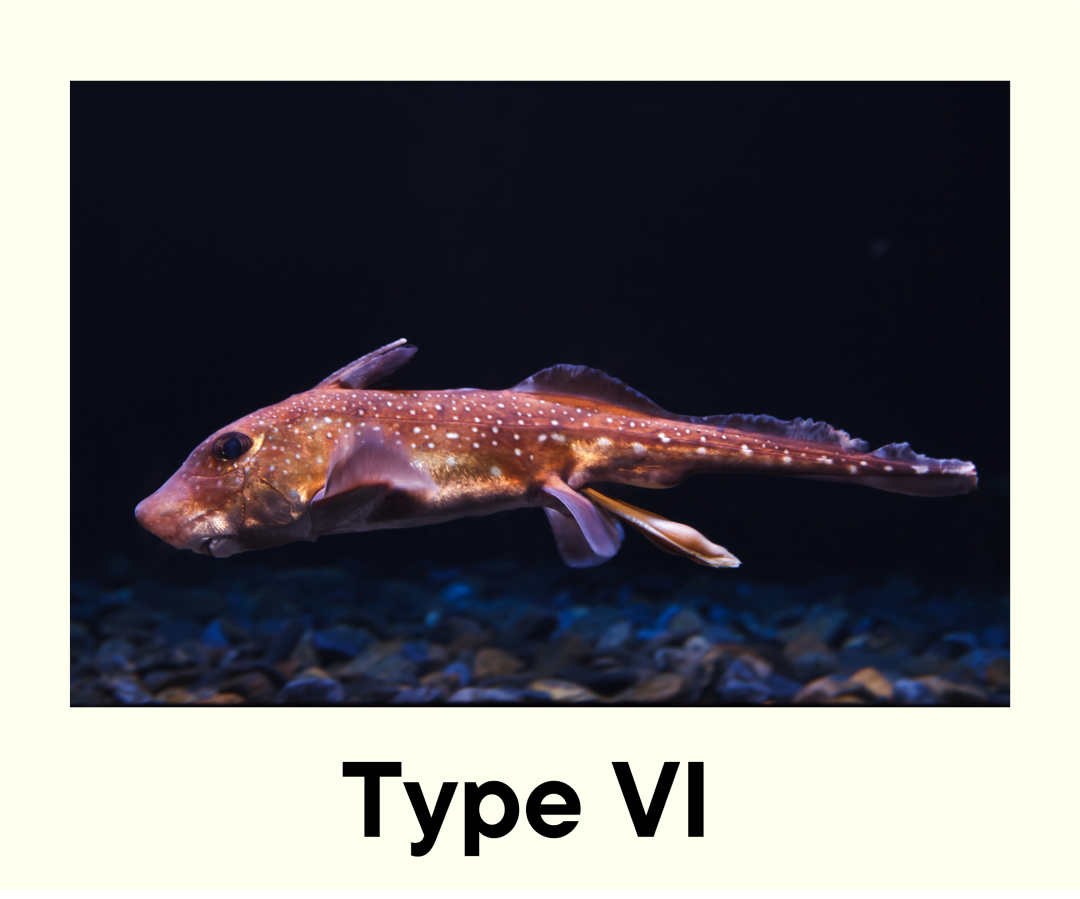
Diet
.png)
Elasmobranchs exhibit a broad dietary spectrum, predating on prey that spans from minute plankton to even larger marine mammals like whales. Plankton or small crustaceans are consumed by large, filter-feeding elasmobranch species, including manta rays (Mobula birostris), basking sharks (Cetorhinus maximus), whale sharks (Rhincodon typus), and megamouth sharks (Megachasma pelagios).
The dietary preferences of most shark species predominantly consist of teleosts, with a substantial majority of stomach contents containing these fish, often exceeding 90%, especially within the Carcharhinus genus. Additionally, cephalopods are frequently encountered as a common component of their prey. Pelagic sharks primarily feed on squid, while demersal sharks tend to favor octopus as part of their diet. In contrast, smaller benthic elasmobranchs frequently target mollusks, while several bottom-feeding carcharhinid species rely heavily on crustaceans as a significant dietary component.
Some large shark species occasionally expand their diet beyond fish. Bull sharks, tiger sharks, and white sharks have been documented with avian prey in their stomachs, indicating their capacity to prey on birds. Furthermore, certain carcharhinid sharks have been observed consuming reptiles such as turtles and snakes. Larger shark species have also been known to regularly target marine mammals as a significant part of their diet. Additionally, the unique tooth and jaw structure of cookiecutter sharks (Isistius brasiliensis) allows them to lead a quasi- parasitic lifestyle by extracting plugs of flesh from larger vertebrates like tunas, billfish, dolphins, whales, and even squids.
.png)
Feeding mechanism
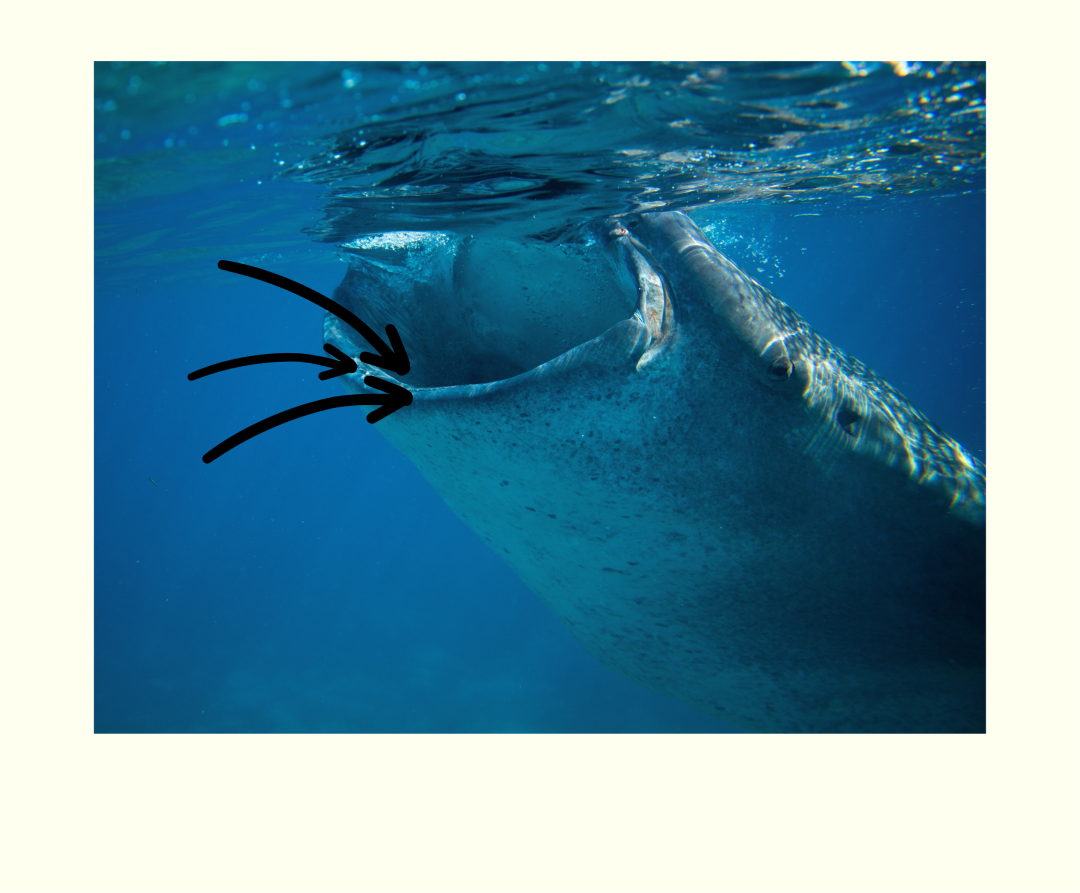
Sharks and batoids use a range of tactics to catch their prey. The most frequent form of prey capture by sharks, particularly carcharhinid and lamnid sharks, is probably ram feeding. The shark swims over the largely motionless victim during ram catch, swallowing it whole or grabbing it in its jaws. Hydraulic suction is subsequently used to transport the food from the mouth through the pharyngeal cavity and into the oesophagus.
Suction feeding, also known as inertial suction feeding, refers to a drop in the buccopharyngeal chamber's pressure that causes prey or food to be drawn into the mouth. Fishes can use a combination of both on a functional continuum that ranges from pure ram to pure inertial suction. Several groups, such as the Orectolobiforms and batoids, appear to use suction feeding as their primary method of prey capture. These suction specialists eat both elusive and non-elusive prey that dwell in or on the substrate, are bonded to it, or are associated with the bottom. Specialisation for suction feeding appears to have independently evolved in combination with a benthic existence.
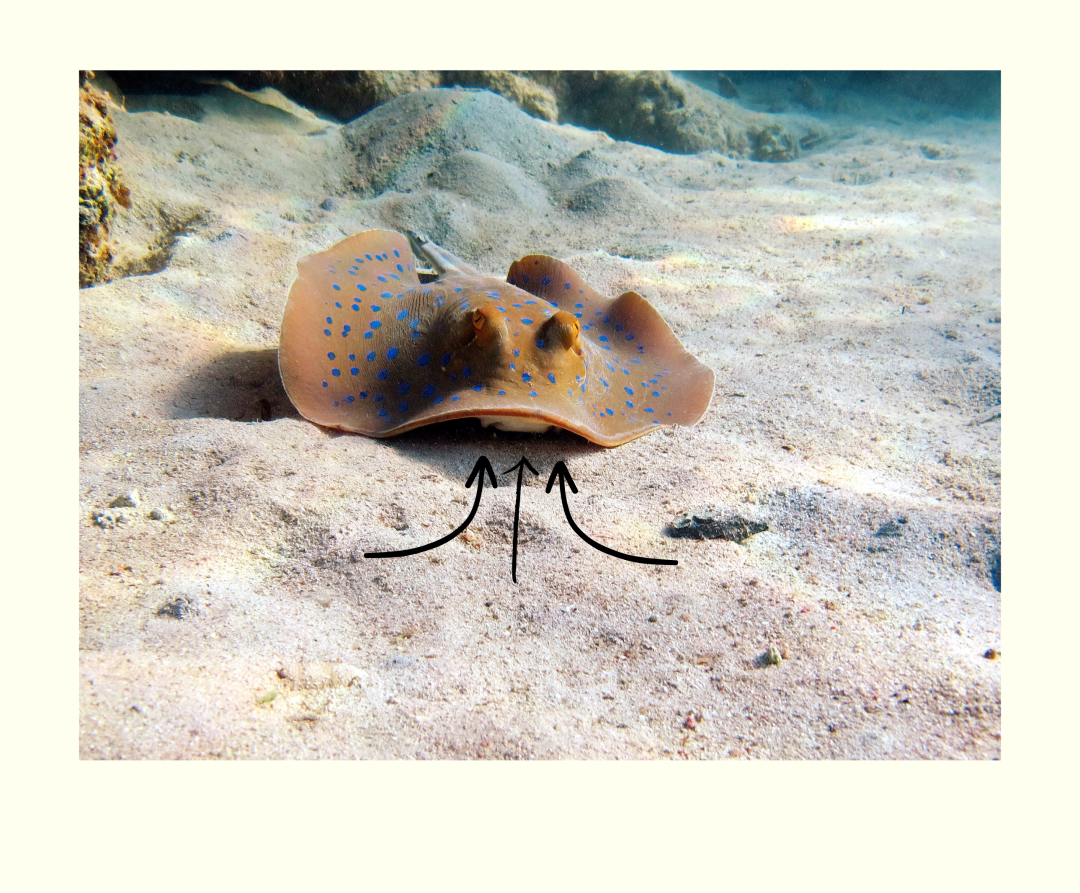
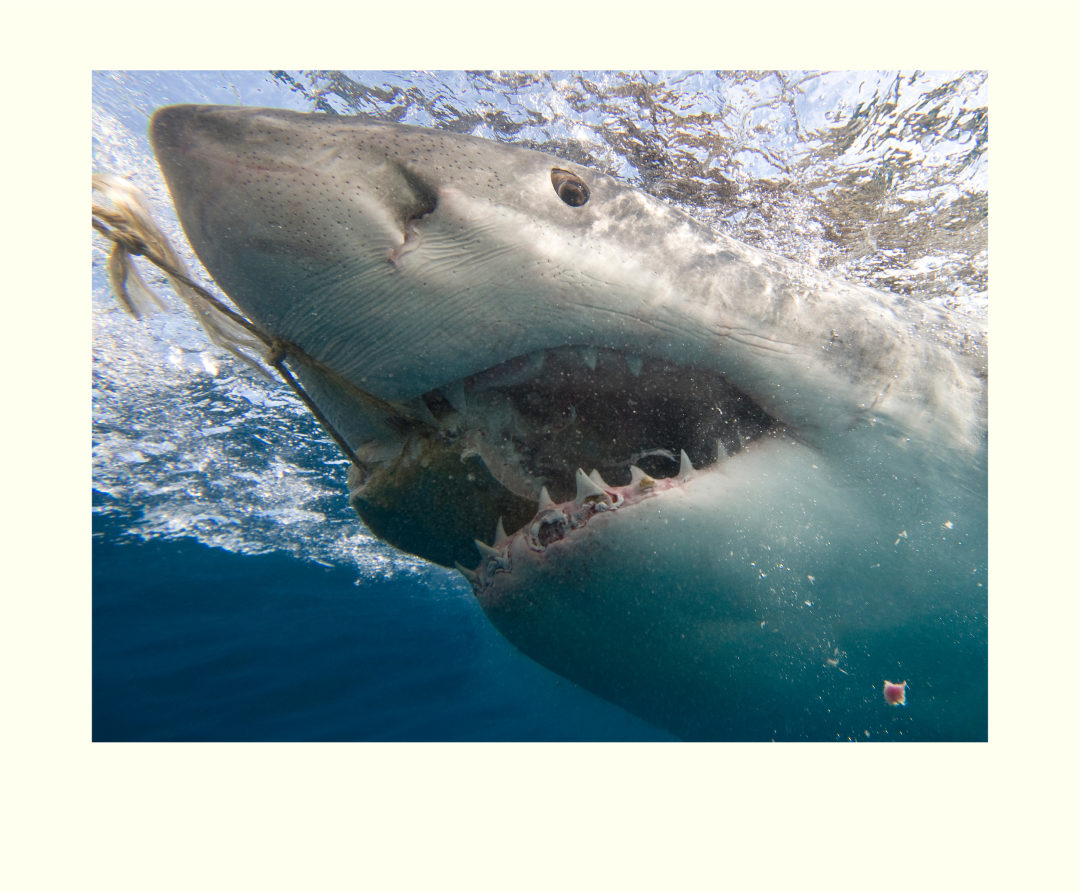
Sharks possess a formidable biting feeding mechanism, relying on rows of sharp, serrated teeth that continuously replace themselves. With powerful jaws, they swiftly and decisively seize their prey, often in a swift and powerful strike. Biting may also occur in conjunction with ram feeding.
Reproduction
All elasmobranchs have internal fertilisation. Internal fertilisation ensures that
energy-expensive eggs are not consumed by other animals and that the energy
allocated to reproduction is passed to the embryos and not wasted. In addition,
internal fertilisation improves the likelihood and efficiency of fertilisation and avoids
sperm wastage. Female elasmobranchs retain the fertilised eggs or embryos for
varying periods, thus protecting the embryos during their most vulnerable stages.
Depending on how long females retain the fertilised eggs, elasmobranchs can be
divided into three groups:
Oviparous elasmobranchs retain their eggs for short periods and then deposit them
on the substrate or attach them to bottom structures. Once deposited, the egg cases
receive no further care from the parent. Parental care is unknown in elasmobranchs.
Embryos are nourished solely by yolk stored in the yolk sac. Oviparity is found only
in three families of sharks (Heterodotidae, Scyliorhinidae, Hemiscylliidae and
Orectolobidae) and in the skates (Rajiformes).
Ovoviviparity, a common reproductive mode in elasmobranchs, particularly skates
and rays, combines elements of both oviparity and viviparity. In this strategy,
fertilized eggs are retained within the female's body, inside specialized structures.
Unlike placental viviparity, there is no direct maternal nourishment through a
placenta, but the embryos receive their sustenance from the yolk sac within the egg
case. The mother gives birth to live young once the embryos have fully developed
within her reproductive tract.
Placental viviparity, a more advanced form of viviparity, is observed in certain
shark species like the hammerheads and requiem sharks. In this mode, embryos
develop inside the mother's body and are connected to her through a placental
connection. This placenta facilitates the transfer of nutrients, oxygen, and waste
products between the mother and her developing offspring. The embryos receive
continuous support and nourishment from the mother throughout their development,
resulting in the birth of fully formed live pups.
Sensory organs
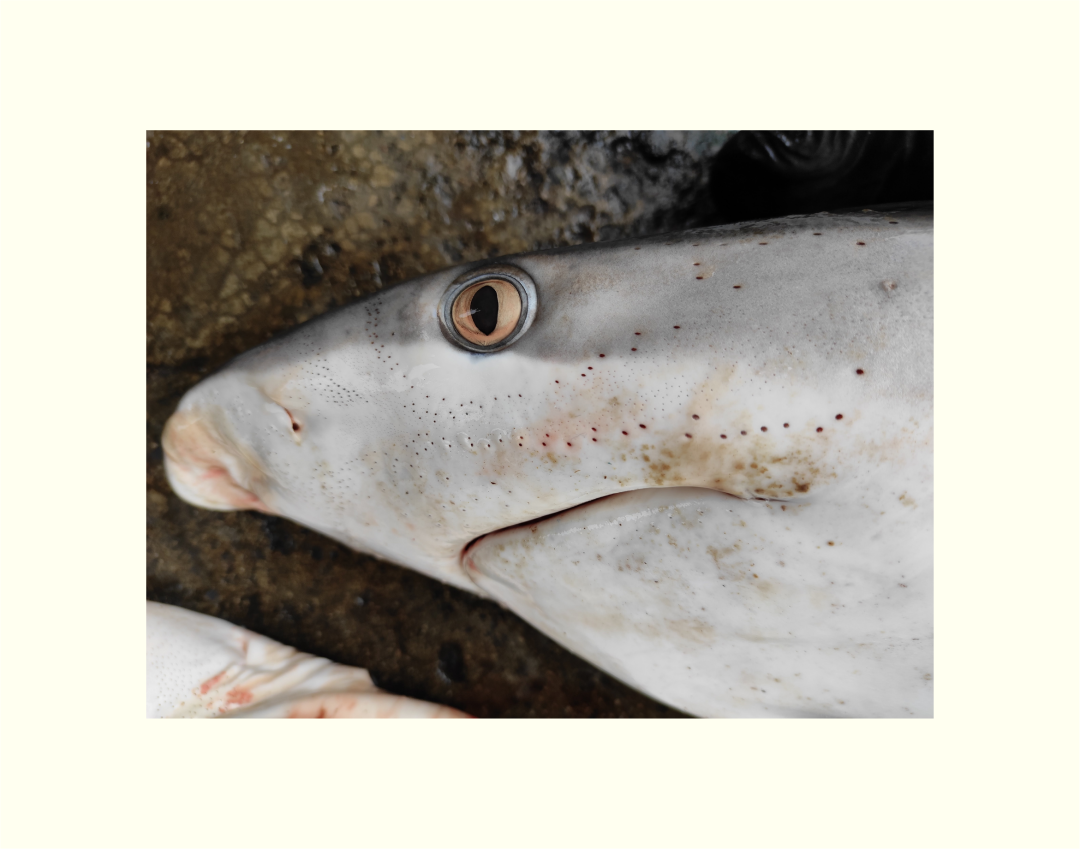
All elasmobranch fishes possess an elaborate ampullary electroreceptor system that is highly sensitive to low-frequency electric stimuli. The ampullary electroreceptor system consists of subdermal groups of electroreceptive units known as the Ampullae of Lorenzini, which can detect weak extrinsic electric stimuli at intensities as low as 5 nV/cm.
Sharks primarily use their sense of smell, or olfaction, to find food. Their smell sensors are found in cartilage capsules on the underside of their head, in front of their mouth. These sensors consist of many layers called lamellae, and these layers are organized into groups known as rosettes. Each of these layers is covered in a special tissue that contains smell-detecting cells.
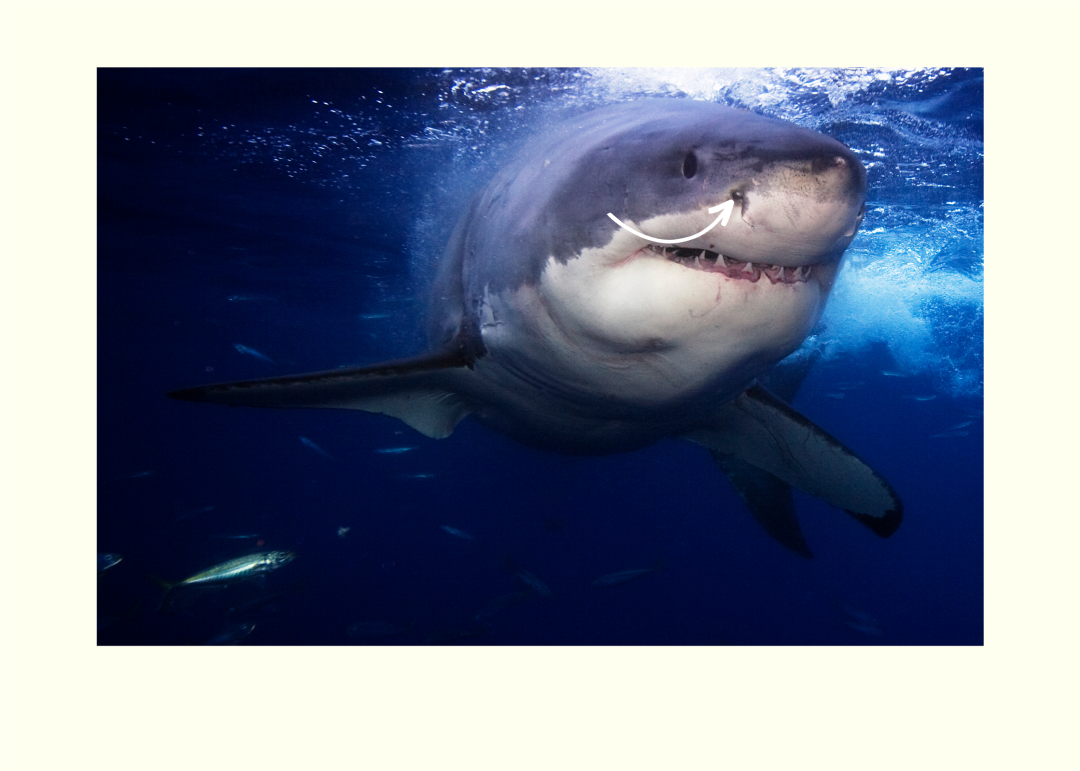
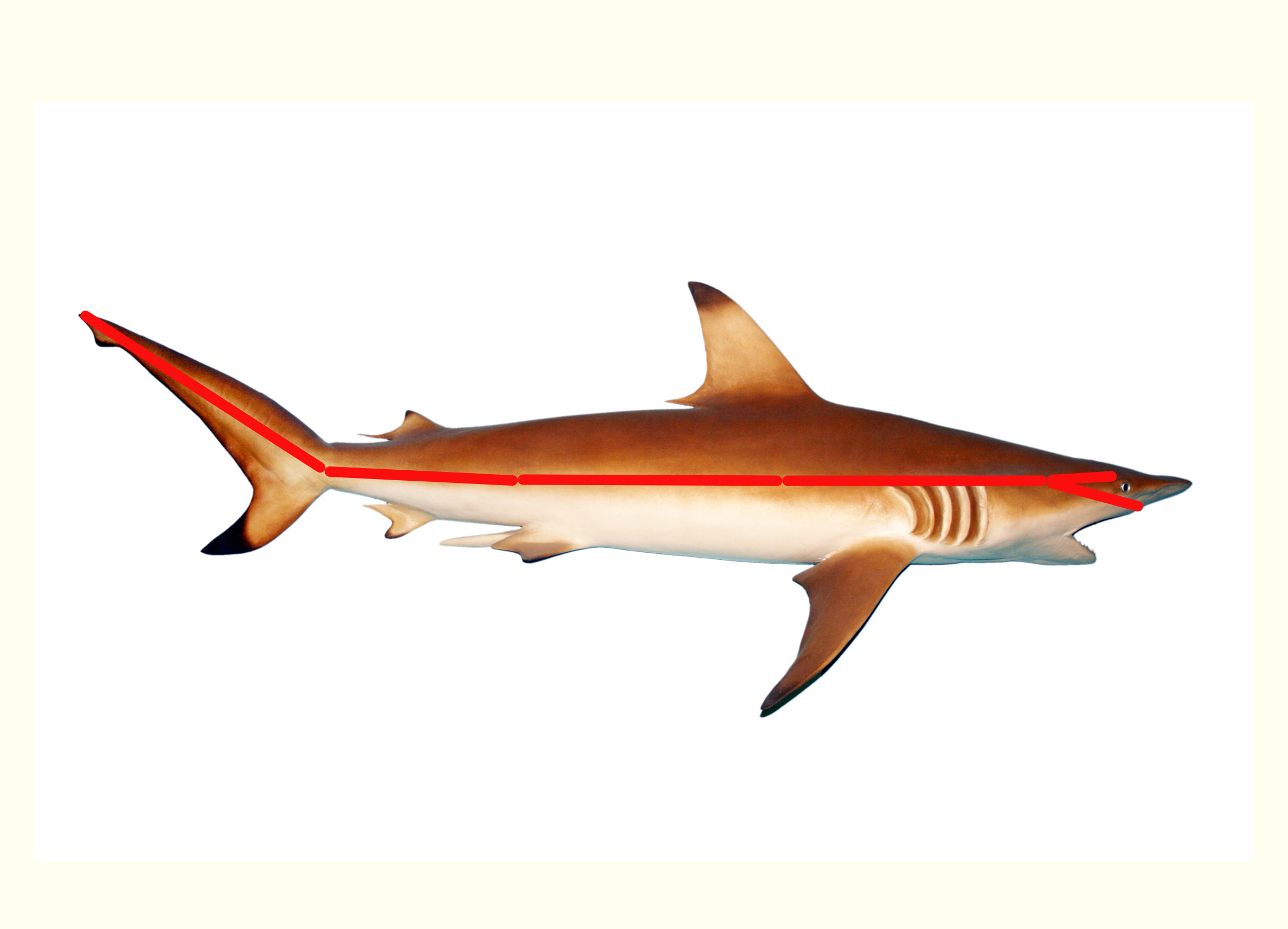
The phenomenon of hearing in sharks is intriguing because of the way sound travels in the ocean, often spanning vast distances in a directed manner. While sharks themselves are not known for emitting sounds, their hearing capabilities are believed to have developed in response to the intricate backdrop of noises (both from physical sources and biological activities) present in their natural habitats. Shark hearing is less acute than the hearing of some other fish, particularly those with hearing adaptations connecting a swim bladder to the inner ear. All the sharks that have been studied exhibit mostly low-frequency sensitivity.
Mechanosensory lateral line systems in elasmobranchs plays a crucial role in detecting large tidal currents, aiding in orientation and navigation, while also sensing small-scale flows that reveal the presence and location of prey, predators, and fellow members of their species during social interactions. This sensory mechanism is activated by differences in movement between the fish's body and the surrounding water, allowing it to identify both dipole sources like prey and uniform flow fields such as currents. The lateral line system serves various functions, including helping with rheotaxis, which is orienting in response to water currents, avoiding predators, creating a hydrodynamic image to locate objects, detecting prey, and facilitating social behaviors like schooling and mating.

